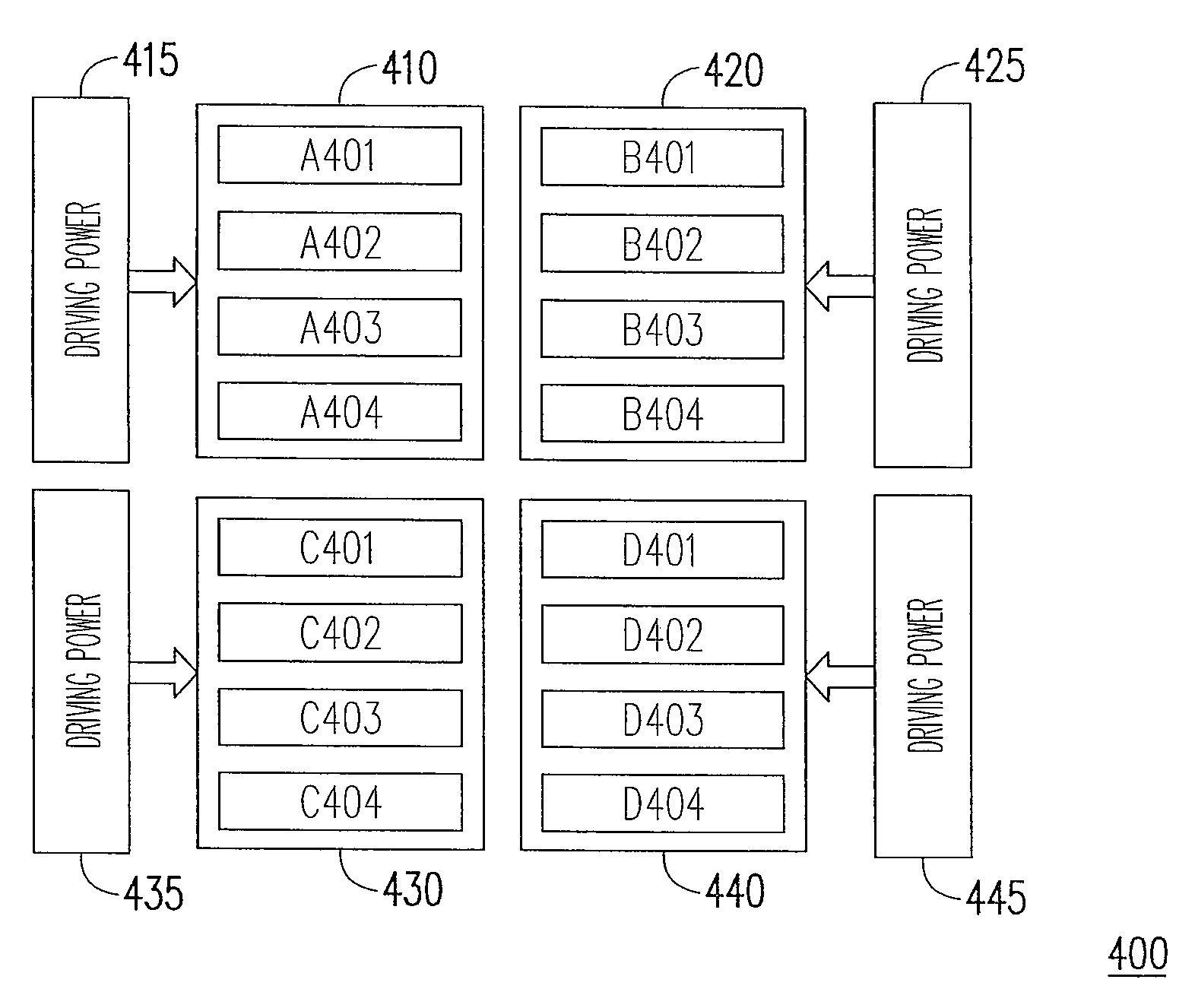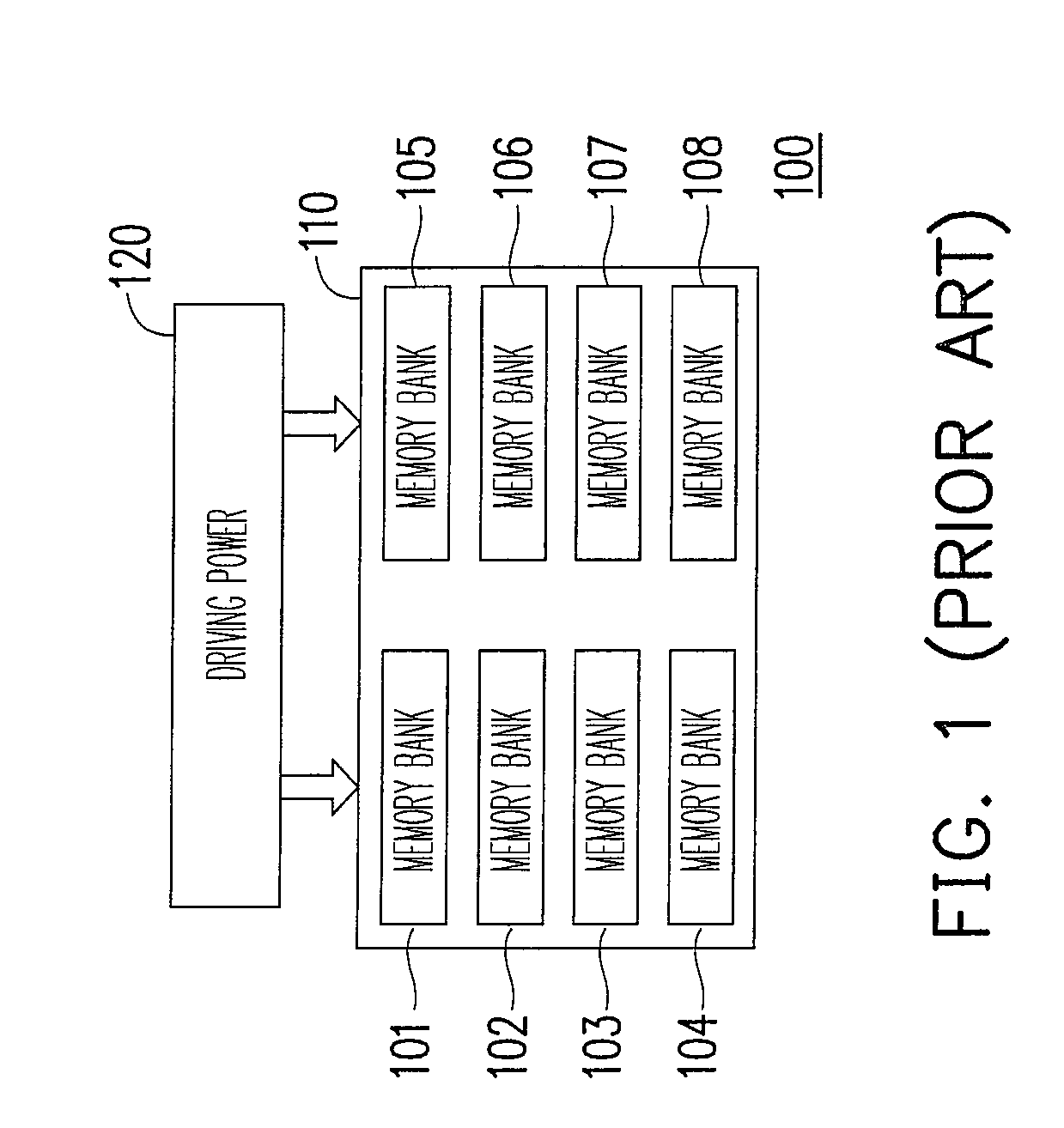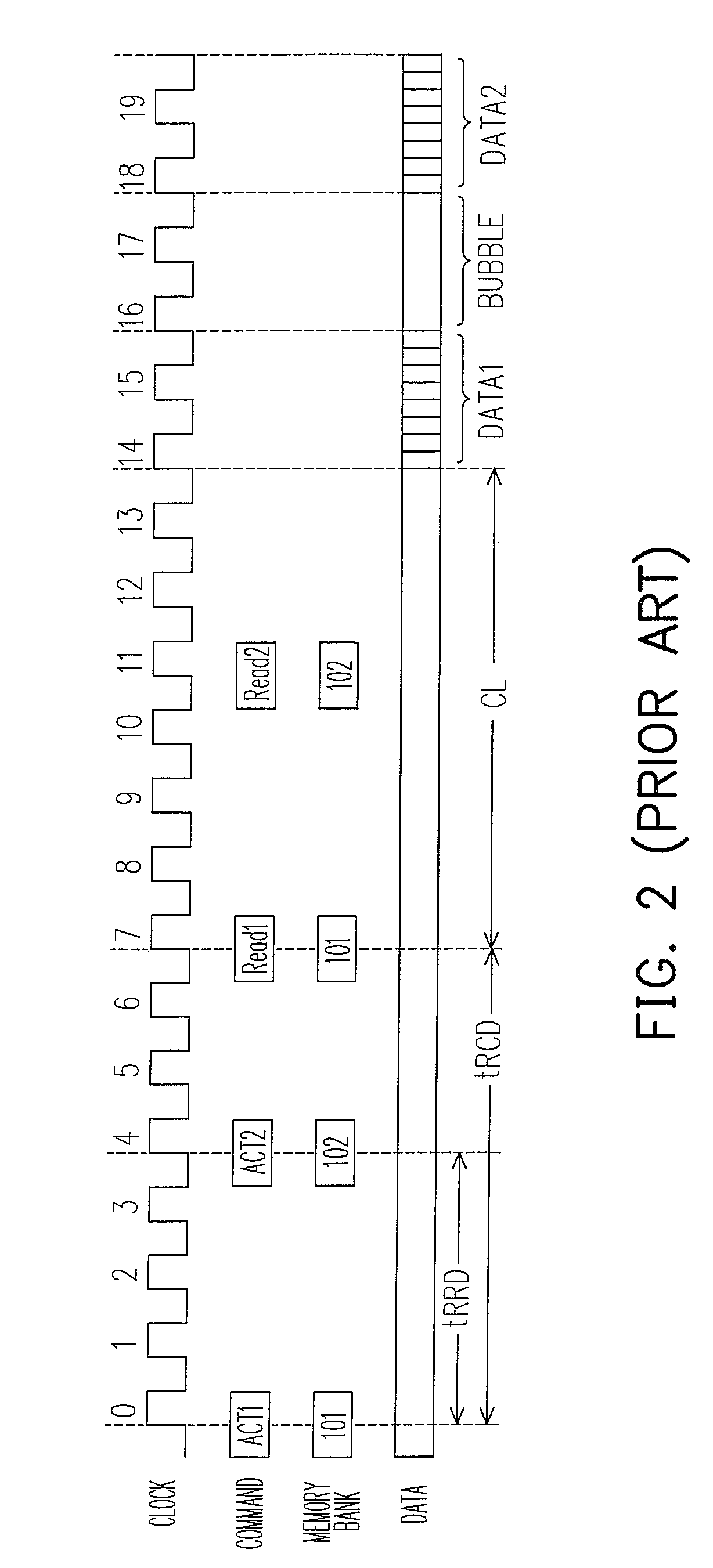Memory and operation method thereof
a technology of memory and operation method, applied in the field of memory, can solve the problems of reducing reading efficiency, data bubble generation, and inability to instantaneously provide the current required for operating the next row, and achieve the effect of improving data selection efficiency and shortening the time interval for selecting rows
- Summary
- Abstract
- Description
- Claims
- Application Information
AI Technical Summary
Benefits of technology
Problems solved by technology
Method used
Image
Examples
Embodiment Construction
[0025]FIG. 3 is a schematic diagram illustrating a memory structure according to one embodiment of the present invention. A memory 300 includes driving powers 330 and 340, and memory groups 310 and 320. Herein, the driving power 330 is coupled to the memory group 310 and the driving power 340 is coupled to the memory group 320. The memory group 310 includes memory banks A301˜A304. The memory group 320 includes memory banks B301˜B304. In other words, the memory 300 divides memory banks into A301˜A304 and B301˜B304. Further, different driving powers 330 and 340 are respectively installed to instantaneously provide the operating voltage required by the memory 300. The driving powers 330 and 340 are independent voltage sources. However, the power lines can be connected or arranged individually. When the memory 300 needs to read the data in the memory banks A301˜A304, the driving power 330 provides the operating voltage to the corresponding memory cells in the memory banks A301˜A304 to p...
PUM
 Login to View More
Login to View More Abstract
Description
Claims
Application Information
 Login to View More
Login to View More - R&D
- Intellectual Property
- Life Sciences
- Materials
- Tech Scout
- Unparalleled Data Quality
- Higher Quality Content
- 60% Fewer Hallucinations
Browse by: Latest US Patents, China's latest patents, Technical Efficacy Thesaurus, Application Domain, Technology Topic, Popular Technical Reports.
© 2025 PatSnap. All rights reserved.Legal|Privacy policy|Modern Slavery Act Transparency Statement|Sitemap|About US| Contact US: help@patsnap.com



